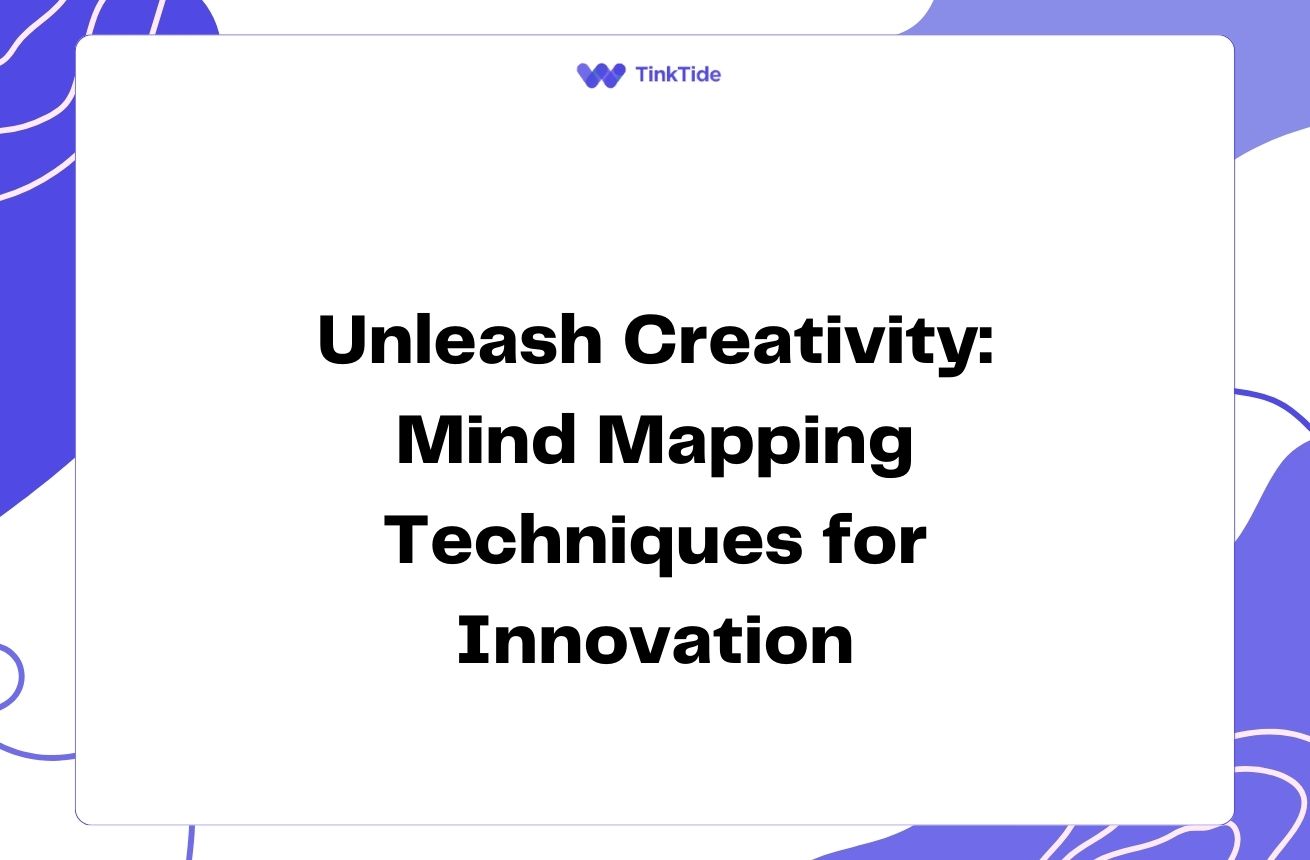Unleash Creativity: Mind Mapping for Innovative Solutions
The Power of Mind Maps in Creative Problem Solving
Mind mapping is a powerful visual thinking tool that can revolutionize your approach to creative problem solving. By organizing information in a non-linear, graphical format, mind maps tap into your brain's natural ability to make connections and generate new ideas.
When faced with complex challenges, traditional linear thinking can often lead to mental blocks. Mind maps, on the other hand, encourage free association and holistic thinking, allowing you to explore multiple perspectives and uncover innovative solutions.
Research has shown that visual thinking techniques like mind mapping can enhance creativity and problem-solving skills. By engaging both the logical left brain and the creative right brain, mind maps help you see the big picture while also focusing on important details.
Getting Started with Mind Mapping
To begin using mind maps for creative problem solving, follow these simple steps:
- Start with a central idea or problem statement in the middle of your page
- Branch out with main themes or categories related to your central idea
- Add subtopics and details to each branch, using keywords and images
- Use colors, symbols, and connecting lines to show relationships between ideas
- Keep your mind map organic and fluid, allowing for new connections and insights
Techniques for Creative Problem Solving with Mind Maps
Once you've created your initial mind map, you can apply various techniques to generate innovative solutions:
1. Reverse Brainstorming: Start with the opposite of your desired outcome and map out ways to achieve that negative result. Then, reverse these ideas to find positive solutions.
2. SCAMPER Technique: Use the SCAMPER acronym (Substitute, Combine, Adapt, Modify, Put to another use, Eliminate, Reverse) to explore different angles of your problem and generate new ideas.
3. Random Word Association: Introduce random words to your mind map and explore how they connect to your central problem, sparking unexpected associations and solutions.
Collaborative Mind Mapping for Team Innovation
Mind mapping isn't just for individual brainstorming; it's also an excellent tool for collaborative problem solving. When working in teams, use digital mind mapping tools like MindMeister or Miro to create shared mind maps that everyone can contribute to in real-time.
Encourage team members to add their ideas, comments, and connections to the shared mind map. This visual collaboration can lead to cross-pollination of ideas and innovative solutions that might not have emerged through traditional brainstorming methods.
To make the most of collaborative mind mapping, establish clear guidelines for participation and encourage open communication. Remember, the goal is to generate a wide range of ideas without judgment, allowing for creative exploration and unexpected connections.
Overcoming Creative Blocks with Mind Maps
When you're feeling stuck or experiencing a creative block, mind maps can help you break through mental barriers. Here's how:
1. Brain Dump: Create a mind map of everything related to your problem, no matter how irrelevant it might seem. This can help clear your mind and reveal hidden connections.
2. Perspective Shifting: Use your mind map to explore the problem from different viewpoints, such as various stakeholders or even fictional characters. This can lead to fresh insights and innovative solutions.
3. Time Travel: Create branches on your mind map for past, present, and future perspectives on your problem. This temporal exploration can uncover valuable insights and potential solutions.
From Ideas to Action: Implementing Mind Map Solutions
Once you've generated innovative ideas using mind maps, it's crucial to translate them into actionable plans. Here's a process to help you move from ideation to implementation:
- Review your mind map and identify the most promising ideas or solutions
- Create a new mind map focused on implementing these selected ideas
- Break down each solution into specific tasks and milestones
- Assign responsibilities and deadlines to each task
- Use your implementation mind map as a visual project plan to track progress
Frequently Asked Questions
Here are some common questions about using mind maps for creative problem solving:
Do I need special software to create mind maps?
While there are many digital mind mapping tools available, you can start with pen and paper. However, digital tools like XMind or Coggle offer features like easy editing, collaboration, and export options.
How can I make my mind maps more effective?
Use colors, images, and symbols to make your mind maps more visually engaging and memorable. Keep your ideas concise, using single words or short phrases. Regularly review and refine your mind maps as your understanding of the problem evolves.
Can mind mapping be used for any type of problem?
Yes, mind mapping is a versatile technique that can be applied to various types of problems, from personal decision-making to complex business challenges. The key is to adapt the method to suit your specific needs and the nature of the problem at hand.
How often should I use mind mapping in my creative process?
Incorporate mind mapping into your regular problem-solving routine. You can use it at the beginning of a project for initial brainstorming, during the process to overcome obstacles, and at the end to summarize findings and plan next steps.
Can mind mapping replace other problem-solving techniques?
While mind mapping is a powerful tool, it's most effective when used in combination with other problem-solving techniques. Use it to complement methods like design thinking, Six Thinking Hats, or the 5 Whys technique for a comprehensive approach to creative problem solving.
Additional Resources
The Mind Map Book
A comprehensive guide to mind mapping by Tony Buzan, the inventor of modern mind mapping
iMindMap
Mind mapping software developed in collaboration with Tony Buzan
Mind Mapping for Kids
Resources for teaching mind mapping to children and young learners
Mind Mapping in Education
Explore how mind mapping can be used in various educational contexts
Visual Thinking: Empowering People & Organizations through Visual Collaboration
A book by Willemien Brand on the power of visual thinking in problem-solving and communication
Unleash Your Creative Potential with Mind Mapping
Mind mapping is a powerful tool for unlocking your creative potential and generating innovative solutions to complex problems. By visualizing your thoughts and ideas, you can tap into your brain's natural ability to make connections and see patterns.
Remember, the key to effective mind mapping is to keep your approach flexible and open-minded. Don't be afraid to experiment with different techniques and adapt the method to suit your unique thinking style and problem-solving needs.
Start incorporating mind mapping into your creative process today, and watch as your ability to generate innovative solutions grows. With practice, you'll find that mind mapping becomes an indispensable tool in your problem-solving toolkit.
Elevate Your Problem-Solving Skills
Ready to transform your approach to creative challenges? Start your journey with our innovative tools today.
Start Your Free Trial
